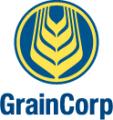CRC70085: Personal Digital Assistants (phase two)
This project was an extension of an earlier scoping project CRC30014 that developed software to collect surveillance data via small personal digital assistants (PDA) devices.
The software developed enhances the conformity and integrity of data collected during urban surveillance activities.
There were two central aims of the second phase project. The first was the delivery of the urban surveillance software to a greater number of surveillance personnel as well as mapping the best method for the integration of collected data into national initiatives such as The Australian Biosecurity Intelligence Network (ABIN) and Biosecurity Surveillance Incident Response and Tracing (BioSIRT).
The second aim of the project was to provide the post-harvest grains industry with a system to digitally collect and collate all grains pests surveillance information (presence/absence of emergency plant pests (EPPs), resistance to phosphine and fumigation/treatment records).
The project introduced a system that provides for seamless digital collection and collation of all surveillance related biosecurity information for the post-harvest grains industry. The system has built in checks to ensure data integrity and it is proposed that collected data may also directly interface with BioSIRT. This means it has the capacity to easily interface with other compliant (national and other) systems and also provides a development path into the future, which could include initiatives like ABIN.
This project allows the rapid and efficient use of all surveillance data to maintain and protect markets for the Australian grains and potentially other agricultural/horticultural industries.
Research outcomes:
PDA Phase Two project successfully developed and deployed six main applications:
- Biosecurity hazard site surveillance
- Multi-pest surveillance (MPS, BioSIRT compatible)
- Khapra beetle surveillance
- Forest plantation pest surveys (IPMG)
- MyPestGuide mobile pest datasheets
- Urban plant pest surveillance (USDB)
- Dermestid surveillance
- Stored grain ecology studies
- European wasp surveillance
- Exotic dung beetle surveys
- Locust surveys
- Tramp ant surveys
The Urban Surveillance Database was built with generic plant biosecurity surveillance in mind and has been adapted for a number of diverse projects. It services the popular need for recording property and contact details, one-is-to-many geo-located and barcoded activities (including digital image), one-is-to-many inspections of activities, one-is-to-many specimen details can be added with barcoded specimen labels and photograph.
Field-collected data are synchronised (two-way data transfer) from anywhere in the world via GPRS, WiFi to a wireless server hosted at DAFWA where it is available for further analysis and reporting.
Smartphone pest identification tools have become popular and can be used in conjunction with USDB to ensure rapid field recognition of potential Emergency Plant Pests. This project developed two database-driven smartphone apps (MyPestGuide & PestWeb Mobile). Individual pest records are added on the wireless server and pushed out to devices. These smartphone identification tools can be deployed as a shell for overseas users, or pre-populated with quarantine pests of significance.
Collaboration with CRC for Forestry resulted in development of the mobile software solution, called IPMG Plantation Health. This software allows foresters to quickly and accurately record pest and disease outbreaks in the field, including; the date of the observation, the extent and severity of any damage caused, GPS co-ordinates and photos. The software also includes brief weed and pest field guides to aid foresters with correct identification in the field.
Research implications:
A high proportion of Australia’s agricultural produce is exported and demonstration of freedom from certain plant pests and diseases is critical to maintaining and securing new market access opportunities. Pest surveillance is an important tool for market access and accordingly importing countries now demand accurate, credible evidence to confirm pest freedom status.
In the past nearly all field-collected plant biosecurity surveillance information was recorded manually to paper reducing the rate of capture, integrity, conformity as well as security of the data. There is a growing need for plant pest surveillance data collection software and hardware that uses smartphones to provide auditing validation, ‘chain of evidence’ as well as increasing the volume of data collected and its integrity through relational databases and seamless data transfer to corporate systems. Smartphone data integrity is supported by GPS-located traps, digital voice navigation itineraries, time and date stamps, field printed barcode labels, site and pest imagery.
Pest identification tools delivered via smartphones are an important tool that allows immediate identification of potential biosecurity threats in the field.
Acknowledgements:
The following CRCNPB participants provided constructive criticism during development of the applications; Michelle Chami, David Cousins, Oonagh Byrne, Marc Widmer, Richard Johnston, Mike Grimm, Peter Gillespie, Deborah Kent, Cain Roberts, Paul Pheloung, Greg Hood, Steve Pratt and Deb Riddell.
Brian McCornack (KSU), Gordon Gordh (USDA) provided a useful US perspective.
Francisco Tovar (CRC Forestry/ Murdoch University) designed the IPMG application. Peter Davis demonstrated the potential for USDB in ant surveys on Barrow Island.
Publications for this project
PROJECT LEADER

Assoc Prof Giles Hardy
Project Leader CRC70085: Personal Digital Assistants (phase two)
g.hardy@murdoch.edu.au
Phone: 08 9360 6272
Fax: 08 9360 6303
Read More
PROJECT DETAILS
Complete
Term
July 2009 – April 2012
Budget
$1,371,600 (cash and in-kind support)








